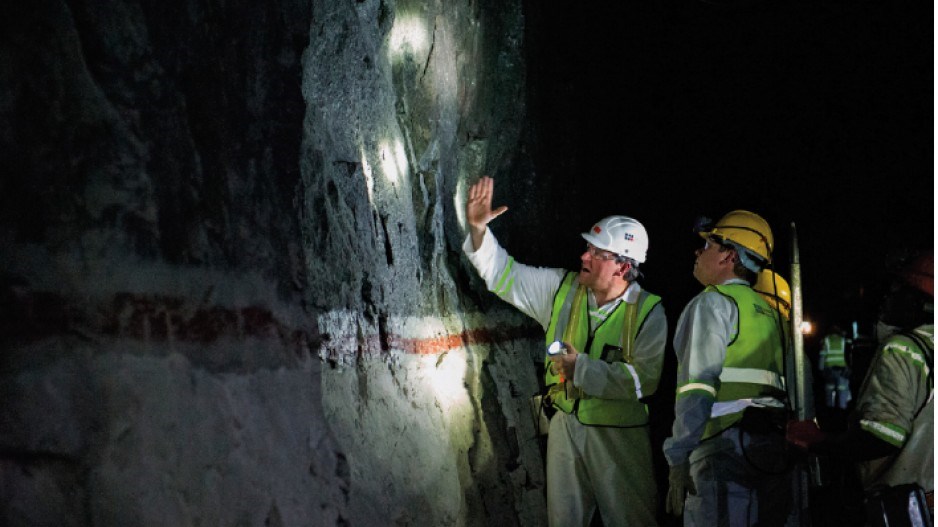A broad-based recovery in the junior market is at least one-and-half to two years away, cautioned prominent investment analyst and Sprott USA chairman Rick Rule in a recent interview with Business in Vancouver.
But certain commodities, particularly platinum and palladium, are poised for a price upswing and should be on investors’ radars.
Rule sees a positive future for platinum and palladium stocks because the metals are used in automobile catalytic converters. Aside from palladium being slightly less dense than platinum, the two metals are nearly identical.
Catalytic converters transform the toxic elements of combustion in a vehicle’s exhaust system into less toxic byproducts.
More than 50% of the platinum and palladium mined each year is used for this purpose.
“The air quality we enjoy in North America is a function of platinum and palladium in catalytic converters,” said Rule.
“And I don’t see a broad-based consensus or people marching with placards for more smog. The consensus is for higher air quality standards.”
About $200 worth of platinum and palladium is used in the average car’s catalytic converter.
“The utility afforded by these metals is so high that the price of it could double and it wouldn’t impact demand in North America for its primary application one bit.”
In 2009, China surpassed the U.S. as the world’s largest new vehicle market. More than 13 million cars were sold that year. In 2012, nearly 19 million cars were sold in China.
Rule said that, because of China’s less stringent air quality standards, Chinese vehicles consume less than one-fifth of the platinum and palladium that North American cars do.
But if stiffer environmental rules are enforced in China, he predicts that would rise.
Currently, platinum trades at US$1,494 per ounce, down from its 52-week high of US$1,737. Palladium costs US$738 per ounce, down from its 52-week high of US$783.
Once built, Vancouver-based Platinum Group Metals Ltd.’s (TSX:PTM) 74%-owned Western Bushveld Joint Venture Project 1 platinum mine in South Africa is expected to produce 275,000 ounces of metals per year over its 20-year projected mine life. Of the 275,000 ounces, 67% is anticipated to be platinum, with the balance a combination of palladium, gold and rhodium.
Initial production at the mine is expected to begin in mid-2015.
Platinum Group is also exploring a new platinum deposit in South Africa, dubbed the Waterberg project, on the north end of the Bushveld property.
With slowdown predicted for Chinese economy, outlook poor for copper and molybdenum
Unlike his forecast for platinum and palladium, Sprott USA chairman Rick Rule said he isn’t confident in either the copper or molybdenum markets.
He said copper enjoyed very strong prices for “a very long time.” And those high prices have meant changes in the production of copper products.
“For example, you are seeing more and more aluminum wiring. Copper is still an extremely efficient as a conductor. In emerging markets, you have not seen substitution. But until you see a pickup in global economic growth, you are going to see softness in copper prices.”
Rule added that there’s little debt available to finance projects.
Institutional investors may be counting on a slowdown in the Chinese economy, which will reduce demand for copper and interest in backing copper developments.
“There is nothing I like better than a good copper deposit, but I’m not looking for much help out of the copper price for three or four years,” he said.
Currently, copper costs US$3.26 per pound, down from its 52-week high of US$3.81.
Helmut Pastrick, Vancouver-based chief economist at Central 1 Credit Union, agrees.
As the global economy improves, so will metals prices because emerging markets such as China and India still need to buy commodities such as copper.
But, like Rule, Pastrick said he doesn’t foresee an imminent recovery. Any rebound is still a couple years away.
“Commodity prices are a function of the state of the global economy,” said Pastrick.
“But we’re not there yet. I’m optimistic for 2015, 2016, 2017.”
As for molybdenum, Rule said two major factors have affected the market: Freeport-McMoRan Copper & Gold Inc. (NYSE:FCX) reopened the Climax mine in Colorado, which dwarfs B.C moly mines in size, and mines in South America continue to produce moly as a byproduct of copper mining.
In some Chilean copper mines, Rule said the cost of molybdenum is just the cost of recovering the ore from the waste stream.
“It is very difficult for a primary producer to compete with that. B.C. is not very competitive in the moly market, truthfully. These days, you want to try and get the moly for free, I’m afraid.”
Currently, molybdenum is trading for US$9.34 per pound, down from its 52-week high of US$12.25.




